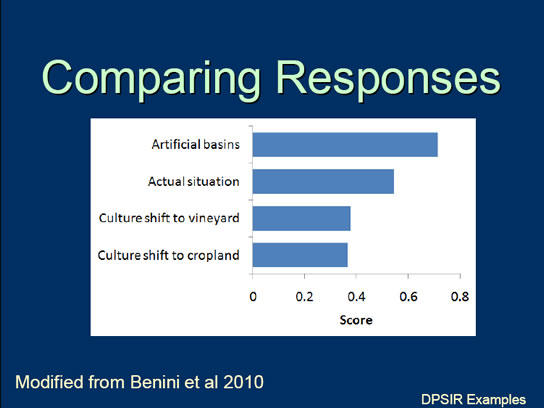Tutorials on Systems Thinking
Comparing Responses

18 / 19
The selected indicators were evaluated under a variety of management scenarios using MULINO-DSS, with equal weight given to social, environmental, and economic concerns. The decision indicators included loss of agricultural income, loss of agricultural surfaces, number of artificial basins, hydrological balance, and presence of a riparian buffer. The various indicators are combined using additive weighting to give a score for each possible management action.
The creation of artificial basins was determined to be the best scenario because it solved the water balance issue but produced only a small loss in agricultural income. The current management scenario ranked 8th out of the 13 evaluated scenarios.
The authors emphasize that their analysis is not the solution, but only one piece to be entered into the public debate on river basin management strategies.
Benini, L., V. Bandini, D. Marazza, and A. Contin. 2010. Assessment of land use changes through an indicator-based approach: A case study from the Lamone river basin in Northern Italy. Ecological Indicators 10:4-14
